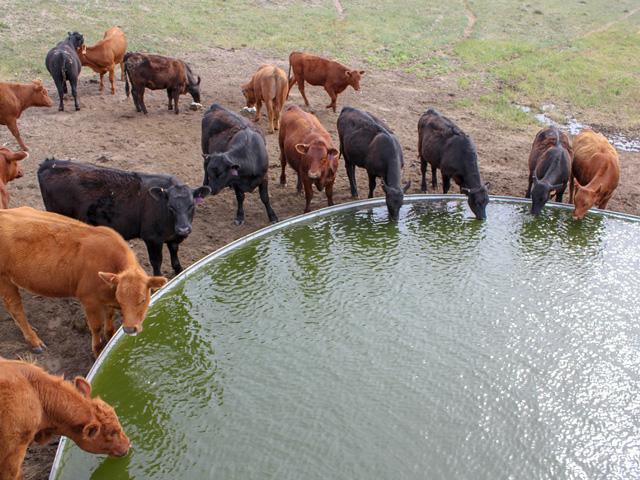Water Checks
Cattle Producers Use New Tech to Monitor Livestock Tanks
Making sure cattle have plenty of water this time of year is key, but it can be a thankless, time-consuming job. University of Nebraska beef educator, Aaron Berger, reports there are lots of new, efficient approaches to do the job today, thanks to technology.
Specifically, Berger says three technologies in recent years have proven their value in reducing the time needed to check water. All will help catch problems sooner rather than later.
1. Remote cameras. Berger said where cell service is available a producer can program a camera to take images of a water tank at different times during the day. These photos can be automatically sent to a mobile device via email or text. Cost for a service like this can range from $150 to $750 per camera, plus the monthly data or service fee. Solar panels can be added to keep remote cameras working, and external antennae can boost signals.
2. Remote Sensors. For producers who use pipeline to get water to cattle tanks, a remote pressure sensor can let them know the pipes are working correctly. When water pressure gets outside of an acceptable range, a notification is sent alerting the producer to a problem. This also notifies one if a well goes down, electricity shuts down or a float comes off a tank.
3. Drones. Drones with remote cameras are becoming a common workhorse. They can be set up to fly programmed flight patterns, to take video or photos. They can also be used to scan windmills, providing a visual inspection that all parts are in working order. Drones are even used to locate cattle and to help spot lethargic or sick animals. Producers need to be sure they comply with all Federal Administration Aviation rules and regulations.
(c) Copyright 2020 DTN, LLC. All rights reserved.
P[L1] D[0x0] M[300x250] OOP[F] ADUNIT[] T[]






